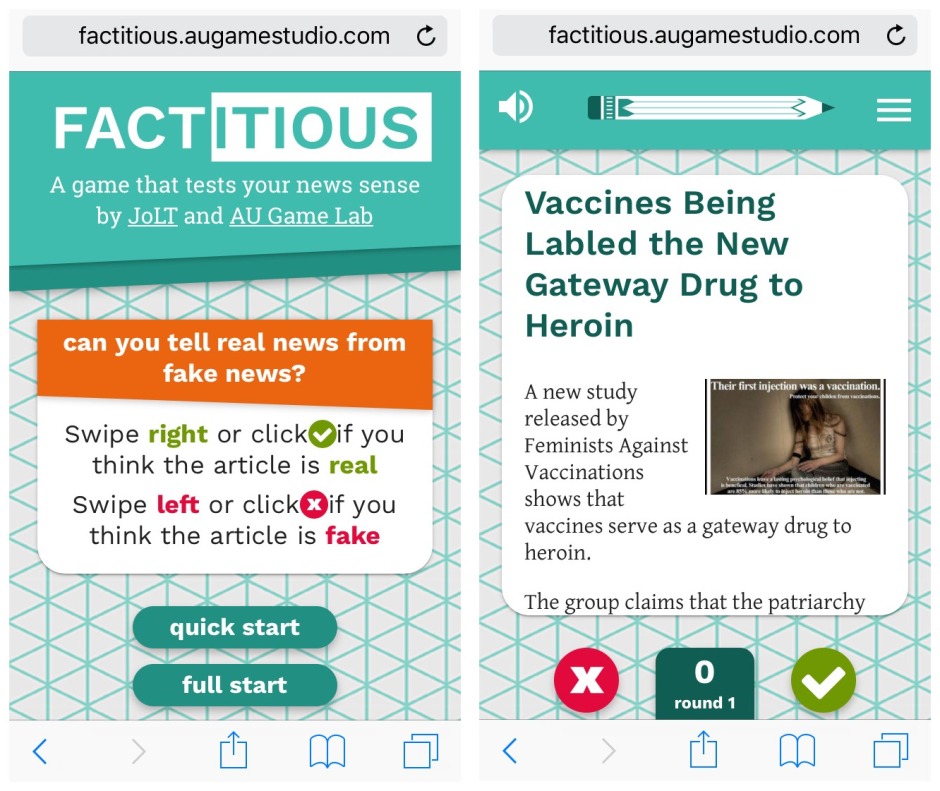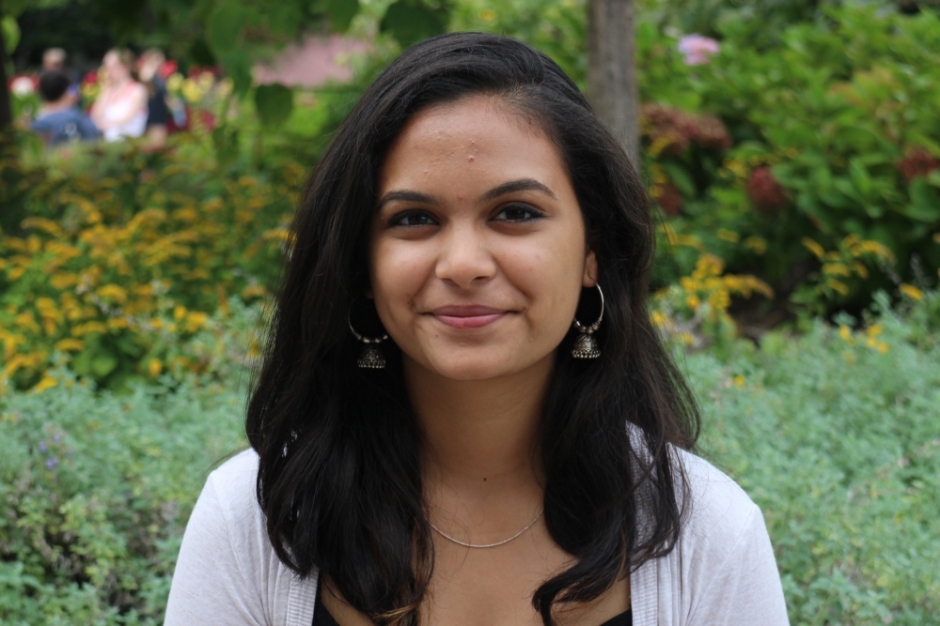By Chris Whitbeck

Bob Hone knows that good ideas can sometimes come from unexpected places.
When a group of Gallaudet University students toured the American University Game Lab on Wednesday, Hone started chatting about health games. The conversation took a turn, and soon he wondered whether anyone ever tried designing a game that required ASL to play.
“I didn’t know until I walked in that room,” Hone said. “And it wasn’t until Maggie Farley introduced her fake news idea that I said, ‘yeah, we can totally do that.’”
As professional fellows in 2016, Hone and Farley collaborated and designed Factitious, a game meant to help players distinguish between real and fake news. One year removed from the presidential election, in which President Trump popularized fake news in vernacular, the game is more timely than ever.
According to Morning Consult’s National Tracking Poll, more than 46 percent of people believe major news organizations fabricate stories about Trump.

Factitious, therefore, is Hone and Farley’s response to the fake news enigma. The game serves a simple purpose— to educate its players how to navigate a world of false media.
The challenge was making the game fun for users while also making them focus on the news they read, said Hone. They decided to give players a major hint by including the source of the information.
“You look at the source and go ok, Washington Post is probably well sourced. Others are a little tricky,” he said. “If people just did that, it would make so much of a difference.”
Although the game was not designed to target any specific audience, Hone would encourage professors to take advantage of the game if they find it useful. But the best way to learn journalism, he said, is to practice it.
“Journalism is a craft. It’s very much an apprenticeship,” said Hone, who won an Emmy for his work at PBS. “The craft of journalism is done by doing journalism.”
Stephanie Mirah, a 19-year-old freshman, sat at a two-top table eating her dinner inside the Mary Graydon Center after her first student media release party. When she applied to American, she did so as a journalism major. The election did not scare her away from the program.
“I kind of decided ‘let’s go into this major despite the current administration,” Mirah said. “I want to learn how to stay true.”
In the same way, junior Sonikka Loganathan, 19, believes fake news has only reaffirmed her choice of major.

“It has made me want to be a journalist more,” said Loganathan. “It hasn’t really changed the way I think about journalism because it’s fiction. But there should be more emphasis on why it’s happening and not just that it’s bad.”
Despite their faith in the program, they each admitted that more can be done to supplement it. In particular, Mirah said she knows the best way she will learn is by doing.
“Sometimes learning the facts is not so applicable to life,” said Mirah. “If you’re not trying out what they’re preaching how do you know you’re doing it right?”
In his 25 years teaching journalism at American, professor Christopher Simpson has witnessed many changes in the industry. When he began, his tool of choice was a typewriter. But today, from his third floor office in the McKinley School of Communication building, a computer sits atop his desk.
According to Simpson, there are fewer well-paid journalism jobs available. This reality has much to do with technological and economic changes, he said. But mostly, people no longer believe journalism to be a team effort.
“The extent of popular belief is that the content of the news media is calculated, that it’s misleading or, in the words of what people most use, is that it’s biased,” said Simpson.
As a result, he believes the legitimacy of journalism has seriously eroded. In fact, as many as 31 percent of people agree with President Trump’s tweet that the media are an “enemy of the people,” according to a recent Poynter Survey. For those reasons, the University should tell the truth to prospective students about the field before they attend, Simpson claimed.

“Frankly, I think that something along the lines of an apprenticeship program is a better way to learn journalism,” said Simpson. “It’s a lot less expensive, and if it’s well designed, a person can come out of it with a better understanding, better skills, than if they were only taught in university.”
He also acknowledged that students need a place to publish their work. Organizations like The Eagle or WVAU are great ways for students to learn through experience.
“Let’s say you have 100 journalism students and 50 go through our training program here and 50 put the same time and attention into The Eagle, WVAU or other actual day to day journalism,” said Simpson. “At the end of four years, if you total up the good and bad, my prediction is the students with the more practical journalism experience will be more effective.”

So, how do you stop fake news?
Back in the Game Lab, Bob Hone had a theory about how information flows. For any group of people on the internet, each have “news mavens,” or experts in any particular field they think are credible.
“My assumption is most people online have one or two people they trust, and we want to make those people smarter,” Hone said with a grin. “Those are the people who can call bullshit.”
You must be logged in to post a comment.